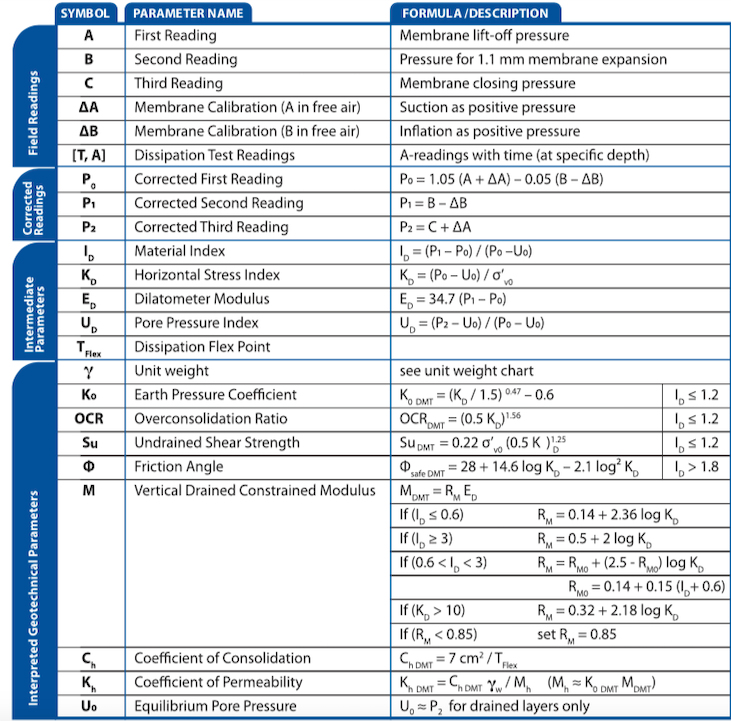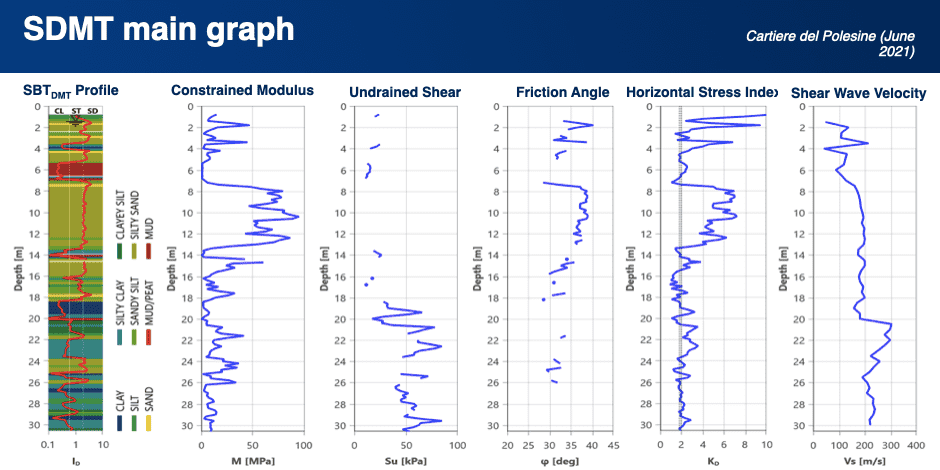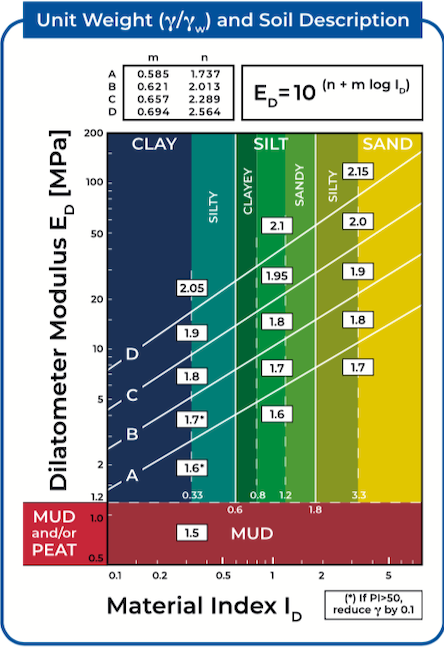The following Table, reproduced from the DMT Report TC16 of ISSMGE 2001, is a summary of the generally adopted formulae for estimating soil parameters from DMT results. The formulae are basically those given in the original Marchetti Asce paper 1980.
The interpretation formulae were derived using theoretical and well established empirical methods (e.g. Shansep) applicable to “textbook” soils. They can be considered “average” formulae for “textbook” soils. They are also supported by numerous validations (DMT / SDMT).
The “traditional” (before year 2000) DMT reduction formulae do not include OCR and Ko in sands, because 1-to-1 correlations like OCR=f(KD) or Ko=f(KD) are too dispersed. Correlations have later been developed predicting OCR and Ko based on two information, namely KD and Qc (cone tip resistance). Details are given in Sections 3 and 4 of Marchetti 2015.

In general the results of a DMT are displayed in the ID MDMT Cu KD format as in Fig. 1. It is recommended that the diagrams be presented side by side, not separated, because a simultaneous vision of the various profiles greatly increases the expressivity of the results.
There is a niche of silts where partial drainage occurs during the ~0.5 min duration the test, with appreciable decrease of the excess pore pressure. Niche silts are often immediately recognizable because Id and MDMT are small or next to zero. Clearly the intepretation in silts with partial drainage are more difficult to interprate than completely undrained soils. More details on the “niche silts” and ways of getting a reasonable interpretation can be found in the “niche silt” section.


Ø = 28° + 14.6 log KD -2.1log2KD (Marchetti 1997, Mayne 2015)
OCR = 0.0344 (MDMT / qt)2 – 0.4174 (MDMT / qt) + 2.2914 (Monaco et al. 2014)
For c‘ and Ф‘ in cemented silts or sands, or in residual soils, methods have been developed by Cruz et al. 2004 and Cruz et al. 2010.
In clay it is impossible to determine c‘ and Ф‘ by common in situ tests, unable to execute a drained test.
In saturated clay no method is available as today for determining c‘ & Ф’.